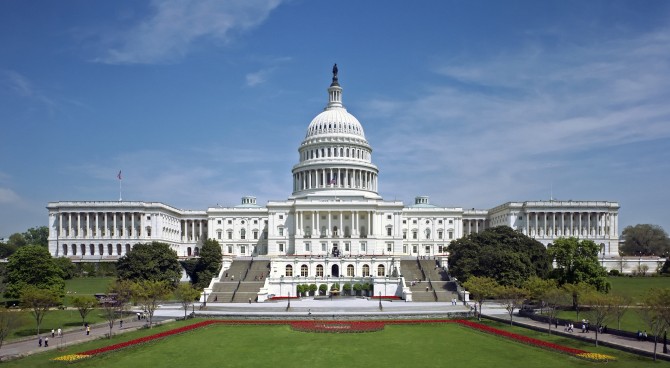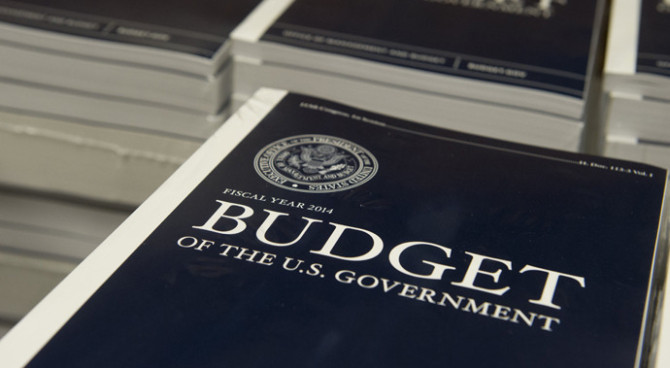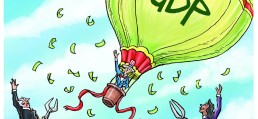The surge in private investment has brought big returns for households as well as the government.
For a midterm report card on the economy under President Trump, take a look at two recent government reports. The Commerce Department reported Thursday that real gross domestic product grew by 3.1% from the fourth quarter of 2017 to the fourth quarter of 2018—the largest rise in 13 years. And last month the Congressional Budget Office reported that even if the current surge in economic growth isn’t sustained, the revenue residual from our current strong growth rate will pay for some 80% of the projected cost of the 2017 tax reform. While these reports reflect only the initial impact of the tax cuts and the deregulatory effort, any objective evaluation would give the administration’s economic program high midterm marks.
The tax cuts and the lifting of regulatory burden have produced an economic takeoff that had failed to occur under the policies of the previous administration, despite a doubling of the national debt and the greatest monetary easing in the history of the Federal Reserve. Many respected economists in those years concluded that America suffered from “secular stagnation” and was incapable of strong growth. But today, greater than 3% GDP growth for the first time in 13 years makes it clear that bad policies rather than fate were the cause of the failed recovery. Slowing global growth, a looming trade war and socialist tax and spending proposals by Democrats in Congress all threaten to nip the recovery in the bud, but for now the economic triumph continues.
Before the tax reform took effect the CBO projected that the tax cuts would have only a modest impact on economic growth, and it continues to predict that stagnation lurks around every corner. Yet it now has projected in consecutive annual reports that higher-than-expected growth will add an extra $1.2 trillion to federal revenue in the coming decade, covering about 80% of the Treasury’s original projected cost of the tax cuts. If 3% growth is sustained for another year, the growth surge will have paid for the tax cuts.
These results shouldn’t be a surprise. The power of tax cuts to incentivize economic output has been apparent at least since the Reagan tax cuts, which ended the stagflation of the 1970s and ignited a quarter-century of strong growth. Before the economy revived in the 1980s, government coffers were filled by inflation, which pushed families into higher tax brackets in a process known as bracket creep. As a result, tax collections rose almost 50% faster than inflation, enriching government while impoverishing workers. The inflation-driven tax spike was so relentless that federal revenues rose even as the economy contracted, producing what the CBO called “a significant fiscal drag on the economy” and helping to trigger the double-dip recession of 1980-82.
Fed Chairman Paul Volcker’s tight monetary policy helped choke off inflation, and the Reagan tax cuts reduced rates and indexed tax brackets to inflation, ending bracket creep. Remarkably, the surge in economic growth after the full implementation of the Reagan tax cuts produced real revenue growth of 5.7% a year from 1984-87, exceeding the bracket-creep revenues, which grew 4.4% a year during the high-inflation period from 1978-81. Strong growth was a windfall for both the government and the governed, while inflation enriched the government at the expense of the people.
As the American tax code has become more progressive, the collection of revenues at the federal, state and local levels all are increasingly dependent on strong economic growth. The top 10% of U.S. households earn 33.5% of all income but pay 45.1% of all income-based taxes, including income, Social Security and Medicare taxes. The top 10% of American earners pay 1.35 times their share of income in income taxes. In France, Germany and Sweden—supposed progressive paradises—the top 10% of earners pay just 1.1, 1.07 and 1.01 times their respective shares of national income.
With the most progressive tax code in the developed world, the U.S. government relies increasingly on a small proportion of higher-income families to pay a larger share of taxes. Because the income of the top 10% of earners is tied closely to business profits and capital gains, slow growth now decimates federal revenues.
Today changes in economic growth overwhelm the direct effects of policy changes. After President Obama raised income taxes in 2013, expecting to collect an additional $650 billion over 10 years, the CBO had predicted annual growth would average 3.7% through 2016. When the actual growth rate for 2014-16 was 40% lower, the CBO revised its revenue estimate down by $3.1 trillion: 4.7 times the amount the tax increase was supposed to collect. The CBO also cut its growth estimate for 2016 by $524 billion, $6,475 of GDP for every family of four in America.
Conversely, when economic growth in 2018 came in higher than the 2% the CBO had projected in the previous year, the windfall added $4,740 of GDP for every family of four and prompted the CBO to increase federal revenue projection for the next decade by $1.2 trillion.
A strong economy simultaneously fills federal coffers and the family purse. It is a great paradox of modern America that those who support more government programs generally espouse economic policies that impede growth and deny government the very revenues that could fund their agenda. Democrats and Republicans alike should always remember that if your income comes from milking the cow, you need to keep the cow healthy.
Mr. Gramm, a former chairman of the Senate Banking Committee, is a visiting scholar at the American Enterprise Institute. Mr. Solon is a partner at US Policy Metrics.
Appeared in the March 5, 2019, print edition.



